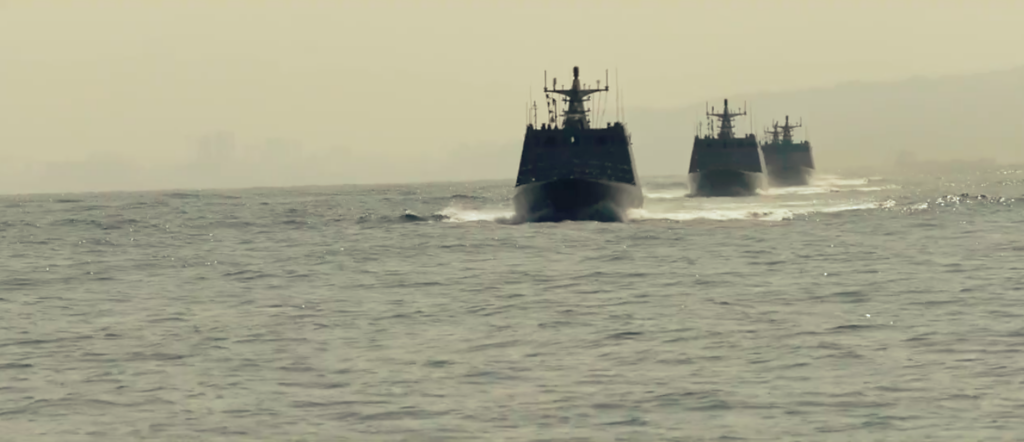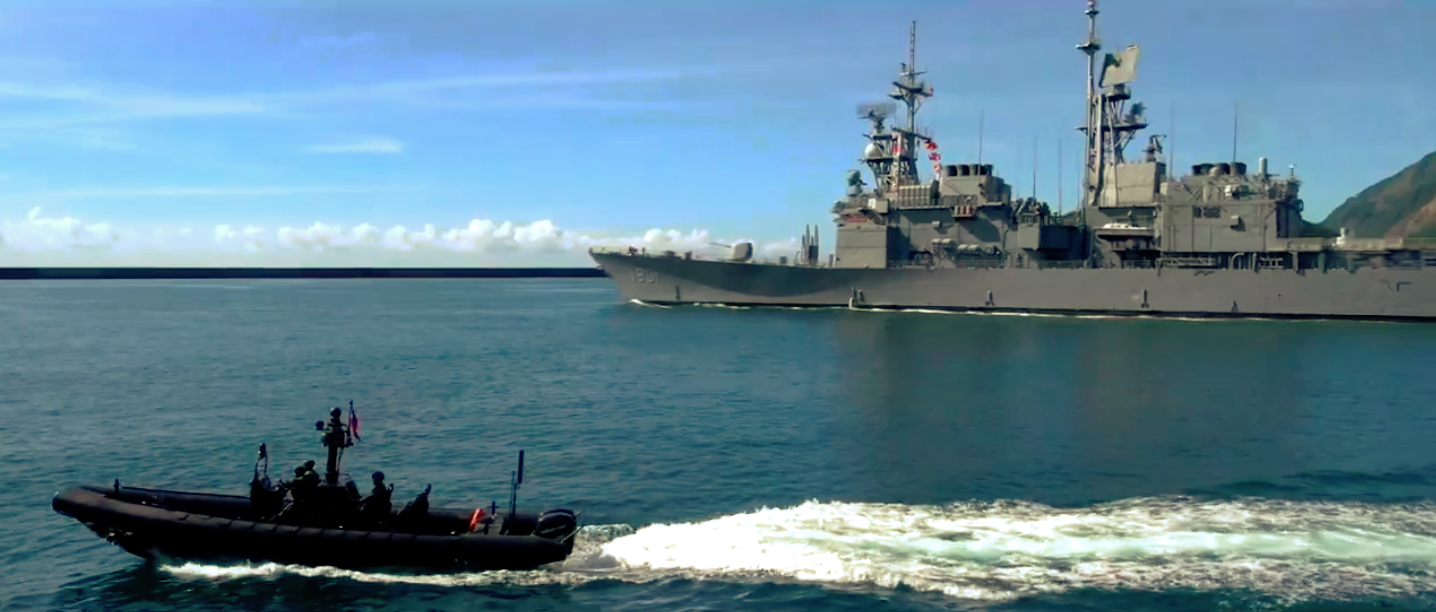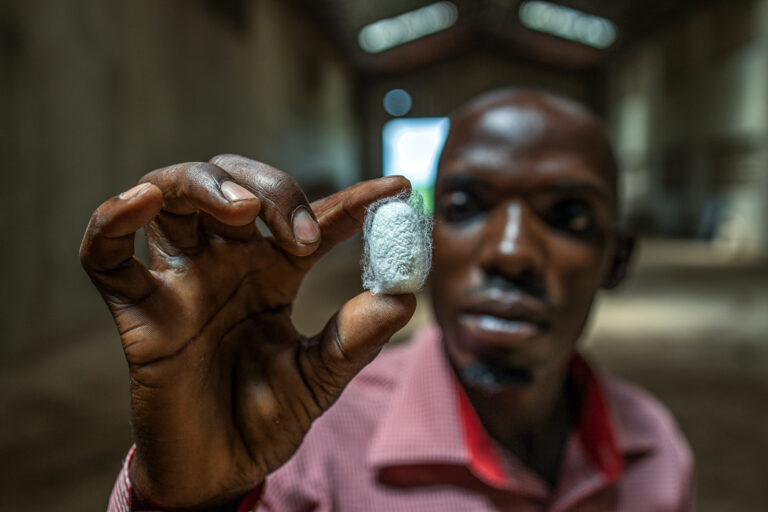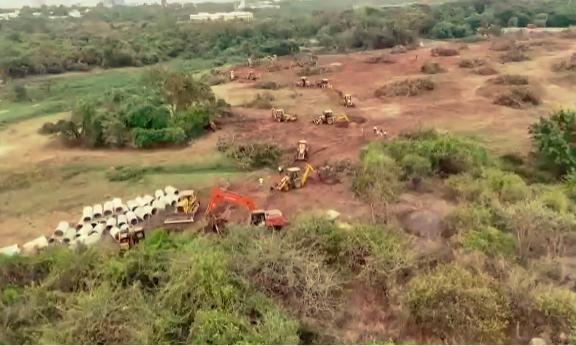
Taipei/Beijing/Washington: The People’s Liberation Army (PLA) Eastern Theatre Command launched large-scale military drills on April 1, 2025, making an unprecedented approach within 24 nautical miles off Taiwan’s north, south, and east coasts, framing them as a “stern warning” to “separatist forces” and foreign interference, directly blaming the United States for escalating tensions.
Taiwan’s Ministry of National Defense claimed today that 76 PLA aircraft, 15 PLAN vessels and 4 official ships operating around Taiwan were detected up until 6 a.m. (UTC+8) today. Yesterday, the Ministry announced that the PLA Navy vessels, led by the aircraft carrier Shandong, were detected from March 29, 2025, and entered into Taiwan’s response zone on March 31. “No matter how the PLA attempts to cloak these actions with exaggerated labels, they cannot justify the inherently provocative nature of such drills,” the Ministry stated today, adding that its armed forces have launched the “Rapid Response Exercise”. It affirmed, “We will remain on high alert and safeguard our national security”.
China’s aggressive military exercises involving the Shandong aircraft carrier have heightened tensions across the Taiwan Strait, drawing a sharp response from the United States. The White House condemned Beijing’s actions, with spokeswoman Karoline Leavitt stating, “China’s intimidation tactics and destabilizing behaviour only serve to exacerbate tensions and put the region’s security and the world’s prosperity at risk.” The U.S. reaffirmed its commitment to Taiwan in the face of China’s “intimidation tactics”, emphasizing support for peace and stability while opposing any unilateral changes to the status quo through force or coercion.
Taiwan has scrambled warships and activated missile systems in response, with President Lai Ching-te denouncing the drills as a threat to regional peace. In a March 31, 2025, statement reported by NPR, Lai said, “China’s military actions are a threat to peace and stability in the region,” a sentiment reiterated here. Taiwan’s Ministry of National Defense stated on April 1, 2025, “We strongly condemn the PRC’s irrational provocations. We firmly oppose PLA’s actions that undermine regional peace,” warning that the drills, extending near Japan, Korea, and the South China Sea, undermine broader security.
The exercises follow a pattern of escalating Chinese military activity, with Taiwan reporting increased incursions since Lai’s March 2025 statement labeling China a “foreign hostile force.” Taiwan has mobilized its defense forces, deploying warships and missile systems to monitor Chinese military movements.
Beijing’s latest manoeuvres come amid heightened tensions following renewed U.S. security commitments to the Indo-Pacific region. During his recent visit to Asia, U.S. Defense Secretary Pete Hegseth reaffirmed Washington’s support for regional allies. Speaking in the Philippines on March 27, 2025, he stated, “Friends must stand shoulder to shoulder to deter conflict and protect stability in these contested waters.”
China has directly linked its latest military buildup in the Taiwan Strait to U.S. actions, citing Washington’s growing support for Taiwan as a key factor behind its military escalation. “We urge certain people in the U.S. to give up the illusion of “using Taiwan to contain China”, abide by the one-China principle and the three China-U.S. joint communiqués with concrete actions, and honor the commitment made by the U.S. on Taiwan-related issues,” Chinese Foreign Ministry Spokesperson Guo Jiakun told reporters in Beijing on March 31 and reiterated the same on April 1.
Responding to Hegseth’s comments, Jiakun stressed that military and security cooperation between the U.S. and Japan should not target any third country or endanger regional peace and development. “By calling China a “threat” and using it as a pretext, the U.S. has been instigating ideological antagonism and stoking division and confrontation,” he said.
The U.S., through the American Institute in Taiwan, has been saying, “There is no justification for China’s irresponsible threats and military pressure tactics.” U.S. Indo-Pacific Command’s Admiral Samuel Paparo, speaking at the Honolulu Defense Forum in February 2025, warned, “Aggressive maneuvers around Taiwan right now are not exercises, as they call them. They are rehearsals,” reflecting ongoing concerns about China’s intentions.
No matter how the #PLA attempts to cloak these actions with exaggerated labels, they cannot justify the inherently provocative nature of such drills. #ROCArmedForces have launched the “Rapid Response Exercise”. We will remain on high alert and safeguard our national security. pic.twitter.com/QTZR5Q6w7j
— 國防部 Ministry of National Defense, ROC(Taiwan)
(@MoNDefense) April 2, 2025
Comparison with Past Exercises
China has conducted frequent military exercises near Taiwan in recent years, particularly since the Democratic Progressive Party (DPP) took power in 2016, reflecting Beijing’s opposition to its pro-independence stance. The latest April 1, 2025, drills, while significant, can be compared to past operations to assess their scale, intent, and implications. In August 2022, following then-U.S. House Speaker Nancy Pelosi’s visit to Taiwan, China deployed over 440 aircraft and fired missiles over the island in its largest-ever exercise, simulating a full blockade. The May 2024 “Joint Sword-2024A” drills, post-Lai’s inauguration, involved 111 aircraft and 46 ships, testing multi-domain coordination. October 2024’s “Joint Sword-2024B” saw a record 153 aircraft, with 111 entering Taiwan’s air defense identification zone (ADIZ), signaling intensified pressure after Lai’s National Day speech.
The April 2025 exercise, with 76 aircraft and 21 warships, including the Shandong carrier, is smaller in scale than Joint Sword-2024B but larger than routine patrols (typically 20-40 aircraft). Unlike the 2022 and 2024 drills, it lacks a formal name, suggesting a shift toward normalizing such operations, as noted by Chinese state media. The inclusion of the Shandong mirrors its use in April 2024’s Joint Sword exercise, emphasizing China’s growing naval projection. However, no live-fire activity was reported, unlike the missile launches in 2022 and occasional rocket tests in 2024, indicating a focus on presence over overt aggression. Compared to past exercises, the geographic scope—extending to Japan and the South China Sea—aligns with a trend of wider regional intimidation, though it falls short of the seven-zone encirclement of 2022. This may suggest a calibrated escalation, balancing deterrence with avoiding immediate conflict.
China’s View: A Sovereignty Stand
China defends its actions as a legitimate defence of territorial integrity, and Beijing views Washington’s arms sales and alliances, like the bolstered U.S.-Japan partnership, as direct challenges to its claims over Taiwan. “The PLA Eastern Theater Command and the Taiwan Affairs Office of the State Council have made announcements on the joint exercises. The drills are a serious warning and an act of containment against “Taiwan independence” separatist forces, and a legitimate and necessary move to defend national sovereignty and uphold national unity,” Jiakun said yesterday.
Taiwan’s Fears: A Prelude to Conflict?
In Taipei, apprehension runs high. Officials fear the drills could mask preparations for a blockade or invasion, a concern amplified by their growing complexity. Polls show rising support for independence, further stoking Beijing’s ire and raising the stakes for Taiwan’s 23 million residents, who see their democratic way of life at risk. Increasing military activity in the Taiwan Strait raises the risk of accidental conflict. The international community has urged restraint, emphasizing the need for diplomatic engagement to de-escalate tensions.
Future Flashpoints
Analysts warn the Taiwan Strait could flare up in the near future, particularly as 2027 nears—when U.S. intelligence predicts China could be invasion-ready. A misstep during these drills, a Taiwanese declaration of independence, or a major U.S. military move could ignite conflict. Yet, China’s economic ties and preference for peaceful reunification might temper its actions, though domestic pressures could push Xi Jinping toward escalation.
For now, the region teeters on edge, with the U.S., China, and Taiwan navigating a fragile balance between deterrence and diplomacy. With both China and the U.S. doubling down on their respective positions, the standoff in the Taiwan Strait appears far from over, fueling concerns about a prolonged period of instability in the region.
– global bihari bureau






